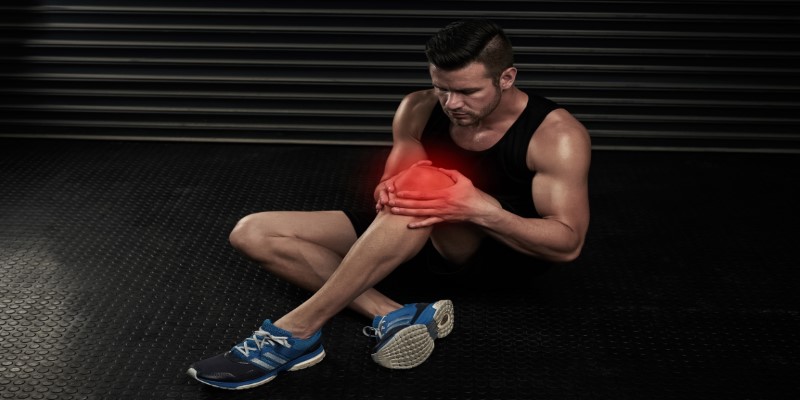
Living with knee pain, especially when caused by arthritis, can be challenging. It affects daily life and mobility, making even simple tasks a struggle. However, you can manage knee pain effectively and maintain an active lifestyle with the right approach. This article explores practical tips and lifestyle adjustments to help you keep moving despite arthritis and other types of knee pain.
Understanding Knee Pain and Arthritis
Knee pain and arthritis often go hand in hand, impacting the lives of many individuals. Arthritis is a condition characterized by inflammation in the joints, and when it affects the knees, it can lead to discomfort, swelling, and stiffness. Two common types of arthritis that significantly contribute to knee pain are Osteoarthritis and Rheumatoid Arthritis.
Now that we've explored the general impact of knee pain and arthritis let's delve deeper into understanding the specific types of arthritis that commonly affect the knee:
Osteoarthritis (OA)
Osteoarthritis is a prevalent form of arthritis and a leading cause of knee pain. Over time, the wearing down of the protective cartilage that cushions the ends of the bones leads to this condition. This joint wear and tear can result from aging, joint injuries, or other factors. As the cartilage diminishes, bones can rub against each other, causing pain, swelling, and reduced mobility.
Rheumatoid Arthritis (RA)
Rheumatoid Arthritis is an autoimmune disorder where the immune system mistakenly attacks the synovium, the lining of the membranes surrounding the joints. In the case of knee joints, this inflammation can lead to pain, stiffness, and swelling. Unlike Osteoarthritis, Rheumatoid Arthritis can affect people of any age and is not solely linked to the natural aging process.
Tips for Everyday Mobility
Maintaining an active lifestyle is crucial when dealing with knee pain, especially arthritis. Here are practical tips to help you stay mobile and navigate your daily activities more comfortably:
Low-Impact Exercises
Engaging in low-impact exercises is key to preserving joint health and managing knee pain effectively. Choose swimming or cycling as they are gentle on the knees while providing cardiovascular benefits. These exercises help maintain overall fitness without putting excessive stress on the joints.
Tai Chi and Yoga
Incorporate practices like Tai Chi and yoga into your routine. These activities focus on controlled movements, balance, and flexibility, contributing to improved joint function. Tai Chi, in particular, emphasizes slow, flowing motions that can enhance stability and reduce knee stiffness.
Proper Footwear
Invest in supportive footwear to provide stability and cushioning for your knees. High-quality shoes with adequate arch support and shock absorption can make a significant difference. Additionally, consider using orthotic insoles tailored to your foot structure, as they can help distribute pressure more evenly and alleviate discomfort during daily activities.
Gentle Stretching
Prioritize gentle stretching exercises to maintain flexibility in the muscles surrounding the knee joints. Stretching can enhance the range of motion and reduce stiffness. Include stretches for the quadriceps, hamstrings, and calf muscles in your routine. Hold each stretch for 15-30 seconds, repeating them several times throughout the day.

Exercise Regimen for Knee Pain Relief
Dealing with knee pain, especially in the context of arthritis, requires a thoughtful exercise regimen aimed at providing relief and enhancing the strength of the knee joints. Here's a detailed breakdown of the exercises that can be incorporated into your routine for effective knee pain management:
Strengthening Exercises
Leg Raises: This exercise targets the muscles around the knee. While lying on your back, lift one leg at a time, keeping it straight. Hold for a few seconds before lowering it back down. Repeat on both legs to improve overall knee stability. Squats: Controlled squats help build muscle strength in the thighs and lower legs, providing essential support to the knee joints. Ensure proper form by keeping your back straight and knees aligned with your toes.
Resistance Training with Bands
Incorporating resistance bands into your workout provides an additional challenge without placing excessive strain on the knees. Place the band around your ankles and perform lateral leg raises or step-ups. This enhances muscle engagement without compromising joint health.
Range-of-Motion Exercises
Gentle Stretches: Incorporate stretches that focus on the muscles around the knee joint. Gently bend and straighten your knee while sitting or lying down to improve flexibility. Hold each stretch for about 15-30 seconds.
Knee Circles: While seated or lying down, gently move your knee in circular motions. This helps in maintaining a healthy range of motion and prevents stiffness.
Balancing Exercises
Single-Leg Stands: Stand next to a sturdy surface for support and lift one leg off the ground, holding the position for 10-30 seconds. Switch legs and repeat. This exercise improves balance and stability, which is crucial for knee joint health.
Heel-to-Toe Walk: Practice walking in a straight line by positioning the heel of one foot directly in front of the toes of the other. This promotes better balance and coordination.

Lifestyle Adjustments for Joint Health
Living with knee pain, especially arthritis, requires thoughtful lifestyle adjustments for optimal joint health. Here's a concise guide:
Weight Management: Maintain a healthy weight to reduce strain on knees. Adopt a balanced diet rich in nutrients and engage in low-impact exercises like walking, swimming, or cycling.
Joint-Friendly Activities: Choose activities gentle on joints, such as swimming, walking, or cycling. These exercises promote mobility without stressing the knees.
Avoid Prolonged Sitting or Standing: Break up extended periods of sitting with short walks. Change positions regularly to prevent knee stiffness. Use supportive seating with proper lumbar support.
Conclusion
In conclusion, managing knee pain is about making informed choices in your daily life. By understanding the types of arthritis, adopting suitable exercises, and incorporating joint-friendly habits, you can significantly improve your overall joint health. Consult your healthcare professional to create a personalized plan that fits your needs. With these adjustments, you can embrace life with reduced knee pain, enhanced mobility, and greater well-being.



